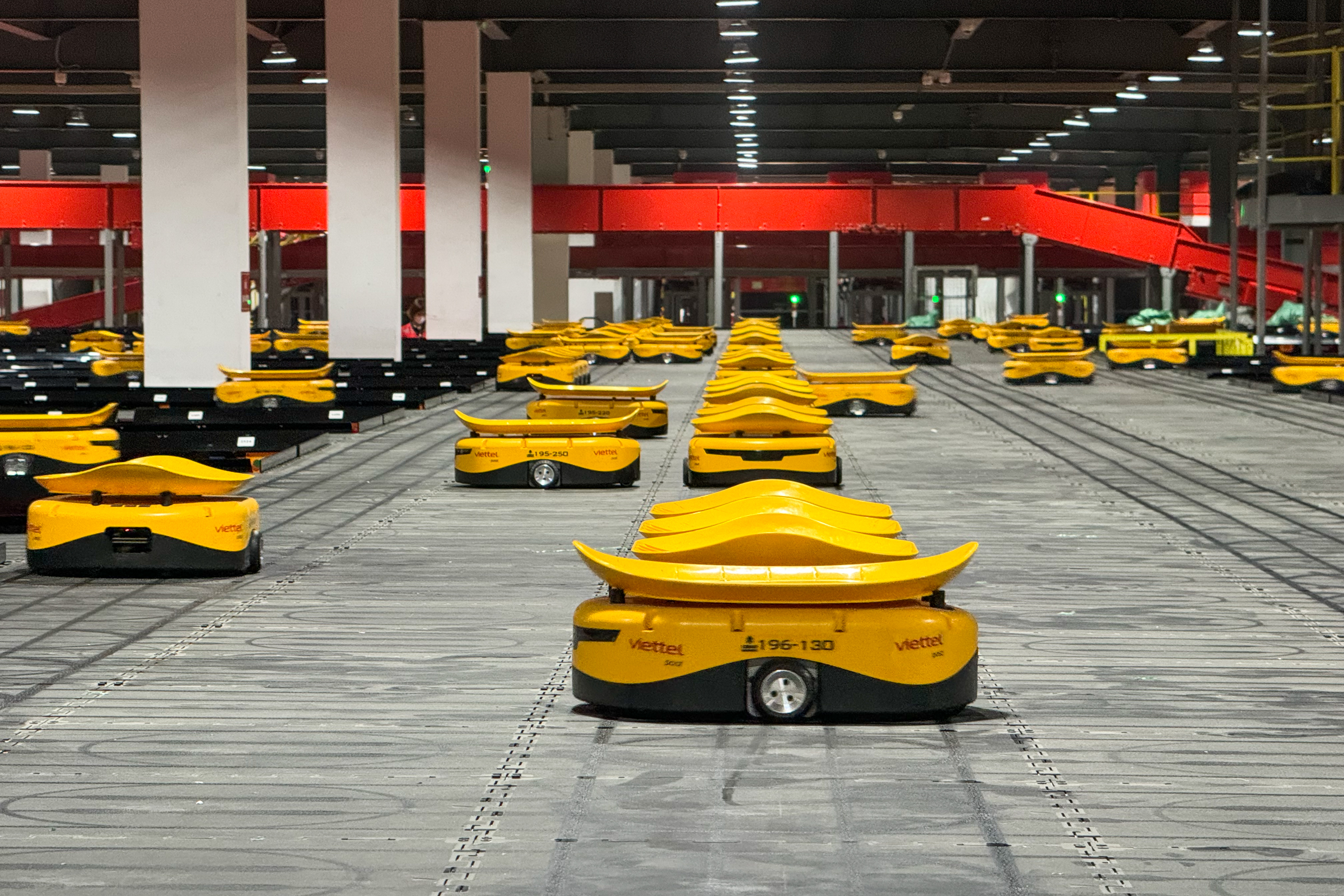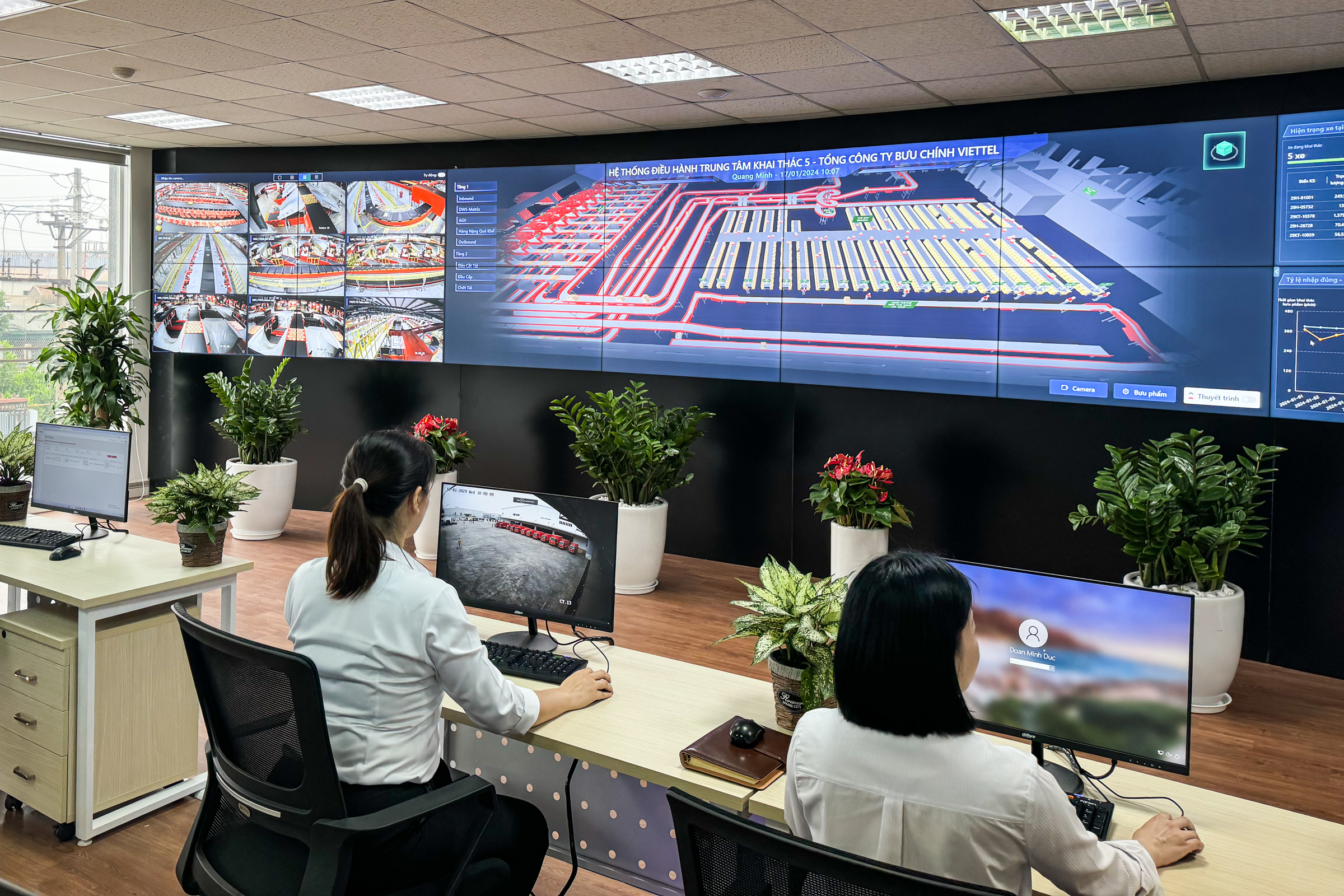Vietnam's logistics market is valued at around 80 billion USD, accounting for nearly 5% of GDP, but logistics costs remain higher than the regional and global average. This forces businesses, especially in manufacturing and retail, to streamline their supply chains and invest in more modern operating infrastructure.
The need for digital transformation in the logistics industry is rapidly increasing to meet the growth of e-commerce and import-export activities. Popular trends include connecting intelligent supply chains, investing in real-time operating management systems, and developing flexible warehouse models.
According to data from the Department of E-commerce and Digital Economy (Ministry of Industry and Trade), by the end of 2024, 61% of Vietnamese businesses had applied digital technology to logistics operations. These technologies have helped reduce average logistics costs by 23% compared to traditional methods and shortened average order processing time by 35% thanks to automation.
 |
Goods transfer robot at Viettel Post. Photo: Luu Quy |
However, according to experts, there is still much room for development. Businesses need to focus on applying advanced technologies such as AI, IoT, and blockchain to supply chain management to improve forecasting capabilities, optimize transportation routes, and enhance transparency throughout the entire process.
For example, the automation and intelligent management transformation is taking place in warehousing and goods storage.
Giao Hang Tiet Kiem (GHTK), a company that owns more than 600,000 m2 of warehouse space, said it has implemented the most advanced technologies such as AI, IoT, and big data into operations. GHTK's IoT ecosystem can connect millions of terminal devices such as scanners, conveyor belts, sensors, cameras, wearable devices, and data processing stations. Through IoT, automated sorting systems are intelligently coordinated and monitored in real time.
AI and machine learning are applied to predict delivery demand by region, suggest schedules, optimize routes, and analyze customer feedback.
 |
Warehouse management center applying many technologies of Viettel Post. Photo: Luu Quy |
Similarly, BEST Express has also developed many technologies to improve warehouse operating efficiency. According to Gavin Lu, General Director of BEST Vietnam, the company has two core systems: DWS (dimensioning weighing scanning) and WCS (warehouse control system), integrating AI modules to automatically coordinate and process the flow of goods. This center can process over 1 million orders per day, shortening the time it takes to sort orders and products from order placement to delivery to users to less than 48 hours.
One of the prominent trends in 2025 is the development of the "micro fulfillment" model - small-scale warehouse systems located near residential areas to process orders faster. For retailers with a large number of SKUs (stock keeping units), separating online and offline warehouses is a solution to increase efficiency. Many industry giants are also accelerating the opening of small warehouses near residential areas to increase processing efficiency.
According to Viet Research, a market research and business strategy consulting firm, Vietnam's logistics will soon enter a deeper stage of digital transformation. The percentage of logistics businesses that successfully undergo digital transformation is expected to increase (currently, only about 27% of businesses implement digital transformation effectively). Many new technologies will be widely applied, such as AI and machine learning to support decision-making (inventory optimization, demand forecasting, delivery route optimization). Blockchain will help ensure transparency in supply chain management and traceability. IoT and big data will create a real-time logistics data ecosystem.
"Digital platforms will be interconnected to form a digital ecosystem for the logistics industry, connecting everything from warehousing, transportation, to delivery. Thanks to this, businesses have an 'end-to-end' view of the entire chain, making decisions faster and more efficiently," the report assesses.
Not only technology, logistics businesses are also pushing the trend of reducing carbon emissions. Recently, Vietnamese export businesses have faced mandatory emission reporting requirements. This creates pressure for transformation from operations to delivery infrastructure.
DHL has been actively replacing transportation vehicles with electric trucks in recent years for both the Vietnamese market and globally. According to a DHL representative, electric trucks will be gradually applied in operations, moving towards completely replacing traditional vehicles in the next three to five years.
Some large domestic companies such as Viettel Post, Tan Cang Sai Gon, and Transimex have also started applying ESG (environmental, social, and governance), implementing environmentally friendly solutions such as switching to waterway transport and investing in energy-saving equipment.
However, according to many industry experts, small and medium-sized enterprises (accounting for a large number in the market) are still hesitant in the green race. Pham Tan Cong, Chairman of the Vietnam Chamber of Commerce and Industry (VCCI), said that ESG standards, net zero, and carbon border taxes are gradually becoming technical barriers forcing businesses to transform to survive.
"Green logistics is no longer a choice, but a condition for the survival of Vietnamese businesses in the global sustainable development strategy," he said.
To promote green logistics, experts suggest that transportation vehicles must use renewable electricity, hydrogen, and LNG. Businesses are also encouraged to switch to waterway and railway transport, which have large transport capacity. In addition, businesses need to optimize processes through larger-scale transportation, reducing empty runs, and building smart warehouses and ports.
Hoai Phuong












